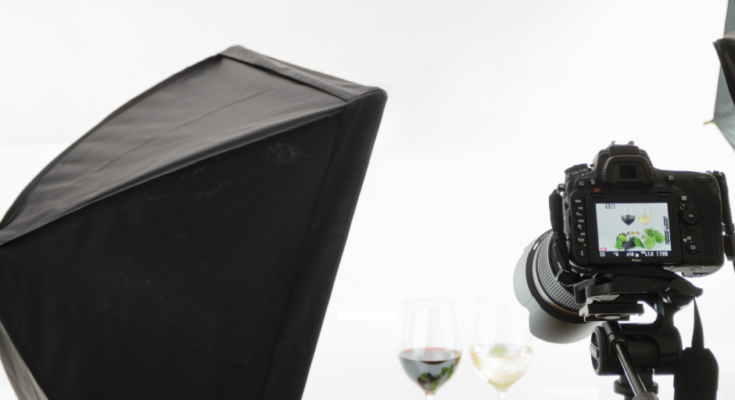Exploring Different Camera Modes
In the world of photography, understanding your camera’s modes is akin to wielding a painter’s palette with mastery. Each mode opens up a realm of creative possibilities, allowing photographers to capture scenes in diverse ways. Whether you’re a novice or a seasoned pro, delving into the intricacies of different camera modes can significantly enhance your photographic journey. Let’s embark on a journey to explore these modes and unravel their unique attributes.
Table of contents
- Auto Mode: The starting point for many beginners, Auto Mode relinquishes control to the camera, allowing it to determine the optimal settings for exposure, focus, and white balance. While convenient, it often limits creative expression and doesn’t account for specific shooting conditions. Nonetheless, it serves as a safety net for capturing quick snapshots without worrying about technical details.
- Program Mode (P): Program mode strikes a balance between automation and manual control. Here, the camera selects the aperture and shutter speed, while still permitting adjustments to other settings like ISO and white balance. It offers more flexibility than Auto Mode, empowering photographers to fine-tune their shots while maintaining ease of use.
- Aperture Priority Mode (A/Av): In this mode, photographers dictate the desired aperture while the camera automatically adjusts the shutter speed for proper exposure. Aperture Priority Mode is invaluable for controlling depth of field, allowing users to achieve striking bokeh effects or ensure maximum sharpness throughout the frame.
- Shutter Priority Mode (S/Tv): Conversely, Shutter Priority Mode enables photographers to set the desired shutter speed while the camera adjusts the aperture accordingly. This mode is indispensable for capturing motion, whether freezing fast-paced action with a high shutter speed or creating dramatic motion blur with a slow one.
Scene Modes:
Many cameras feature predefined Scene Modes tailored to common shooting scenarios such as portrait, landscape, macro, and sports. These modes optimize settings for specific situations, making them ideal for novice photographers seeking guidance in various shooting environments.

Creative Filters and Effects:
Some cameras boast built-in creative filters and effects that can be applied in real-time or during post-processing. While purists may eschew these features, they can serve as fun tools for experimentation, enabling photographers to add artistic flair to their images with minimal effort.
Understanding and mastering these camera modes .
In conclusion, mastering different camera modes is akin to acquiring a versatile set of brushes for painting the canvas of your imagination. Whether you’re striving for technical precision, artistic expression, or simply capturing fleeting moments, harnessing the power of these modes will elevate your photography to new heights. So, grab your camera, venture forth, and let your creativity soar.
Elevating Your Photography Beyond the Lens:
Photography isn’t just about capturing a moment; it’s about the artistry and vision behind it. In the digital age, post-processing and editing have become integral parts of the photographic process. From enhancing colors to correcting imperfections, editing allows photographers to elevate their images to new heights. In this article, we’ll explore the significance of post-processing and delve into various techniques to help you unleash the full potential of your photographs.

Understanding Post-Processing:
Post-processing refers to the manipulation of digital images after they have been captured. It involves a range of techniques aimed at enhancing, correcting, or stylizing photos to achieve the desired aesthetic. While some photographers prefer to keep their images as true to life as possible, others embrace post-processing as a means of creative expression.
The Importance of Editing:
Editing is where raw images truly come to life. It allows photographers to fine-tune various elements such as exposure, contrast, color balance, and sharpness. Additionally, editing software provides tools for removing distractions, retouching imperfections, and applying artistic effects. These adjustments can transform an ordinary photo into a captivating masterpiece, showcasing the photographer’s unique style and vision.
Choosing the Right Editing Software:
With numerous editing software options available, choosing the right one can be overwhelming. Adobe Photoshop and Lightroom are popular choices among photographers for their comprehensive toolsets and advanced features. Lightroom’s non-destructive editing workflow and organization capabilities make it particularly well-suited for photographers who work with large volumes of images. On the other hand, Photoshop offers unparalleled flexibility and precision, making it ideal for intricate retouching and compositing tasks. Other noteworthy options include Capture One, Affinity Photo, and GIMP, each offering its own set of features catering to different preferences and workflows.
Essential Editing Techniques:
Exposure Adjustment: Fine-tuning exposure is crucial for achieving the desired brightness and contrast in an image. Exposure adjustments allow photographers to recover highlight and shadow details, ensuring a well-balanced exposure throughout the photo.
Color Correction: Color is a powerful tool for conveying mood and atmosphere in a photograph. Color correction techniques such as white balance adjustment, vibrancies, and saturation control enable photographers to enhance or modify the colors to achieve the desired look and feel.
Sharpening and Noise Reduction: Sharpening enhances the clarity and definition of details in an image, while noise reduction minimizes unwanted graininess, especially in low-light or high ISO images. Balancing these adjustments ensures a crisp and clean final result.

Retouching and Cloning:
Retouching involves removing blemishes, distractions, or unwanted elements from an image to create a polished look. Tools like the clone stamp and healing brush enable precise retouching, seamlessly blending areas to maintain a natural appearance.
Creative Effects: Beyond basic adjustments, editing software offers a plethora of creative effects to add artistic flair to photos. From vintage filters to dramatic black and white conversions, experimenting with creative effects can yield stunning and unique results.
Conclusion:
Post-processing and editing are indispensable tools for photographers seeking to elevate their work to new heights. By mastering various editing techniques and experimenting with creative effects, photographers can unleash their full creative potential and produce captivating images that resonate with viewers on a deeper level. Remember, while editing can enhance a photograph, it’s the photographer’s vision and creativity that ultimately bring it to life.
